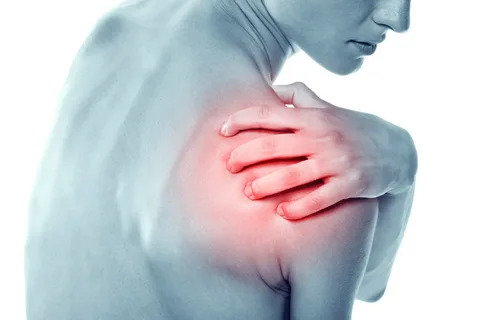People frequently resort to complementary and alternative therapies that provide all-natural methods of pain management in an effort to relieve their misery. These alternative therapies cover a broad spectrum of methods and approaches with the goals of reducing pain, accelerating recovery, and improving general health. We will examine a number of complementary and alternative pain management techniques in this comprehensive essay, such as massage therapy, herbal medicine, acupuncture, and chiropractic adjustments.
Acupuncture: Correcting the Flow of Energy
The ancient Chinese treatment method known as acupuncture involves inserting tiny needles into certain body spots in order to encourage the passage of qi and aid in healing. In traditional Chinese medicine, pain is said to be caused by an imbalance or obstruction in the body’s energy flow. By opening up energy channels called meridians, acupuncture seeks to restore equilibrium while reducing pain and enhancing general health. Studies have demonstrated the efficacy of acupuncture in treating a range of pain conditions, such as fibromyalgia, migraines, osteoarthritis, and chronic back pain.
Chiropractic Adjustment: Spinal Alignment
The diagnosis and treatment of musculoskeletal conditions, especially those affecting the spine, are the main goals of chiropractic care. In order to realign misplaced vertebrae and relieve pain, chiropractors employ manual manipulation techniques. This improves overall function. Back pain, neck discomfort, headaches, and sciatica can all be made better with chiropractic care by realigning the spine and treating underlying musculoskeletal problems. Furthermore, in order to improve treatment results, chiropractors may combine complementary therapies including massage, stretches, and lifestyle counseling.
Using Natural Medicines in Herbal Medicine
Plants and plant extracts are used in herbal medicine, sometimes referred to as botanical medicine or phytotherapy, to treat a variety of illnesses, including pain. Herbal pain relief products include natural analgesic and anti-inflammatory properties that help reduce inflammation and encourage healing. Turmeric, ginger, white willow bark, boswellia, and devil’s claw are common herbs used to relieve pain. These herbs can be applied topically as lotions or ointments, brewed into teas, or consumed orally as supplements. Compared to traditional pharmaceuticals, herbal therapy offers a more holistic and natural approach to pain management with fewer side effects.
Massage Therapy: Easing Tension and Relaxing Muscles
A manual method of treating pain, massage therapy works by working on the body’s soft tissues to ease tension in the muscles, increase blood flow, and encourage relaxation. To target certain regions of pain and discomfort, a variety of massage techniques can be employed, including trigger point therapy, deep tissue massage, Swedish massage, and myofascial release. In addition to relieving physical discomfort, massage treatment improves mental and emotional health by lowering stress and encouraging relaxation. Studies have demonstrated the efficacy of massage treatment in addressing a range of pain conditions, such as osteoarthritis, fibromyalgia, and chronic back pain.
Mind-Body Therapies: Uniting the Mind and Body
Mind-body treatments acknowledge the influence of thoughts, emotions, and beliefs on general well-being and center on the relationship between mental, emotional, and physical health. These treatments seek to ease pain and advance healing by encouraging rest, lowering stress levels, and increasing self-awareness. Pain management techniques utilizing mind-body approaches include guided imagery, yoga, tai chi, mindfulness, and meditation. These methods assist people in improving their quality of life and managing pain by teaching them self-regulation and coping skills.
Biofeedback: Using the Mind-Body Connection to Your Advantage
Biofeedback is a method that measures physiological reactions, such as heart rate, muscle tension, and skin temperature, using electronic monitoring equipment and gives people immediate feedback. People can effectively manage pain and lessen symptoms related to illnesses including migraines, tension headaches, and chronic pain syndromes by learning to control these physiological responses through relaxation techniques. Through biofeedback, people can become more conscious of how their bodies react to stress and pain, which enables them to actively control their pain and general well-being.
In summary
By treating the underlying causes of pain and fostering the healing of the body, mind, and spirit, alternative therapies provide a holistic and natural approach to pain management. Alternative therapies for pain alleviation range from acupuncture and chiropractic adjustments to herbal medicine, massage therapy, mind-body therapies, and biofeedback. Through the exploration of alternative therapies and collaboration with skilled practitioners, people can discover long-lasting and efficient approaches to pain management and enhancement of their general quality of life.

